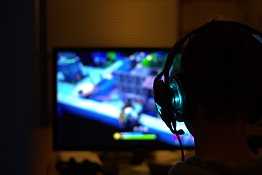Impact of Refresh rate on Competitive gaming
Players need the best hardware and software to ensure they have the edge over their opponents. One important aspect of gaming hardware that has gained significant attention in recent years is the refresh rate of gaming monitors.
Refresh rate is the number of times a monitor updates the image on its screen per second. A higher refresh rate means a smoother and more responsive visual experience. In the gaming industry, refresh rate has become a crucial factor in determining a player’s performance.
One of the primary reasons refresh rate matters in competitive gaming is that it reduces motion blur. When playing games with fast-moving objects, lower refresh rates may cause blurry images, which can be frustrating, can cause eye fatigue and disadvantageous. In contrast, higher refresh rates provide a clear and smooth visual experience, which can give players an advantage by allowing them to react more quickly and accurately.
In addition, refresh rate can also impact input lag, which is the delay between when a player performs an action and when it is displayed on the screen. A higher refresh rate can help reduce input lag, allowing players to perform actions faster and more accurately.
To cater to the needs of competitive gamers, gaming monitor manufacturers have introduced technologies such as Freesync and G-Sync. These technologies synchronize the refresh rate of the monitor with the output of the graphics card, minimizing screen tearing and stuttering, which can significantly improve the player’s experience.
Changing Refresh Rate
Changing the refresh rate on a gaming monitor is usually a straightforward process. Most gaming monitors come with an option to adjust the refresh rate from the display settings. In some cases, users may need to download specific software to adjust the refresh rate.
While premium gaming monitors with higher refresh rates tend to deliver better performance, budget gaming monitors can still provide a decent gaming experience. However, it is essential to ensure that the monitor can support the desired refresh rate and that the other hardware components can handle the increased load.
If you are wondering whether 75Hz is enough or should you upgrade o 144Hz then our article on 75Hz vs 144Hz can help you make up your mind.
Conclusion
In conclusion, refresh rate is a critical factor that can significantly impact a player’s performance in competitive gaming. Higher refresh rates can reduce motion blur and input lag, providing a more responsive and accurate gaming experience. With technologies like Freesync and G-Sync, gaming monitors are now better equipped to meet the needs of competitive gamers, providing a smoother and more immersive experience.
If you are looking for the best gaming monitors under a budget the following articles can prove to be a great help

